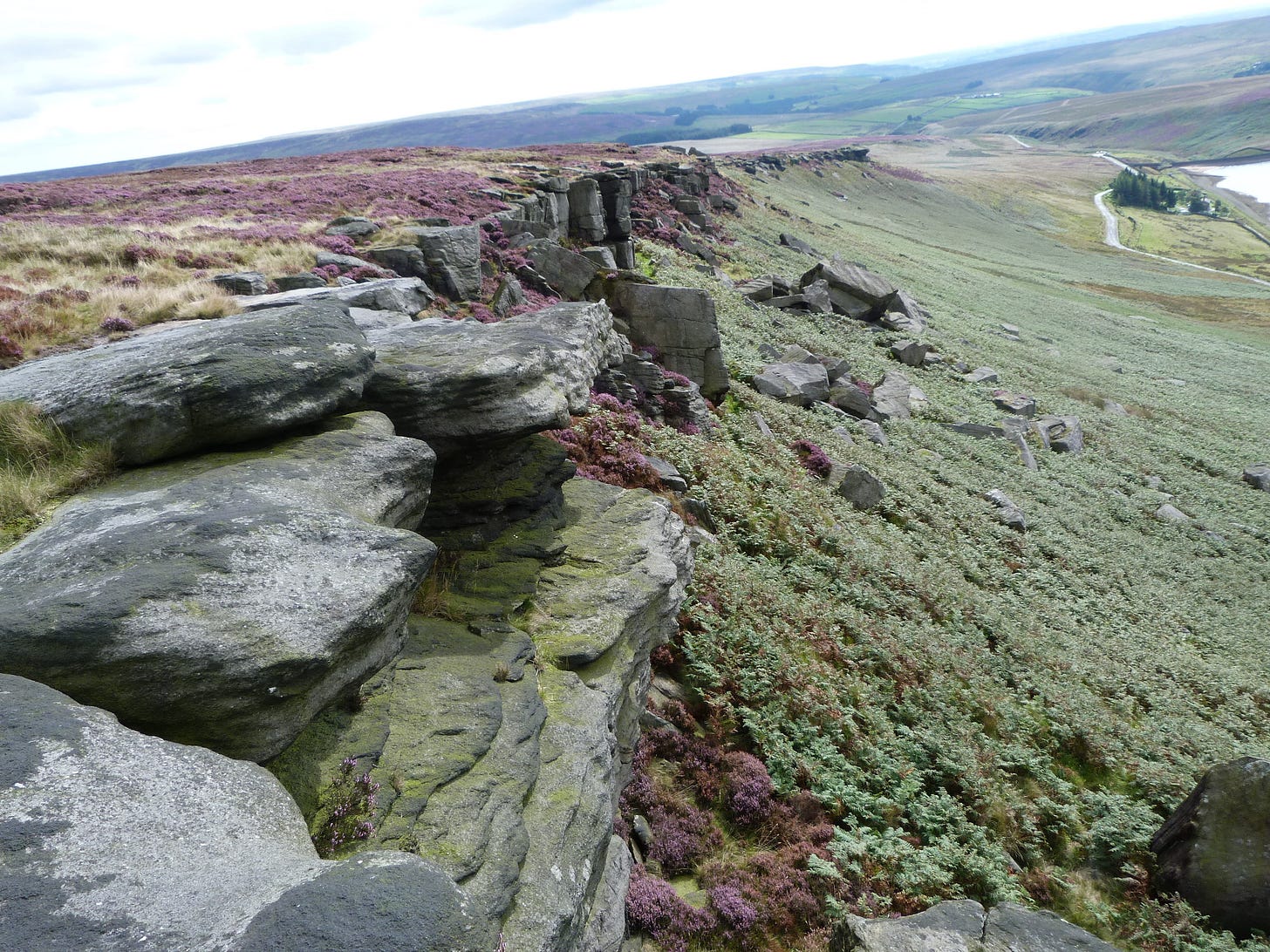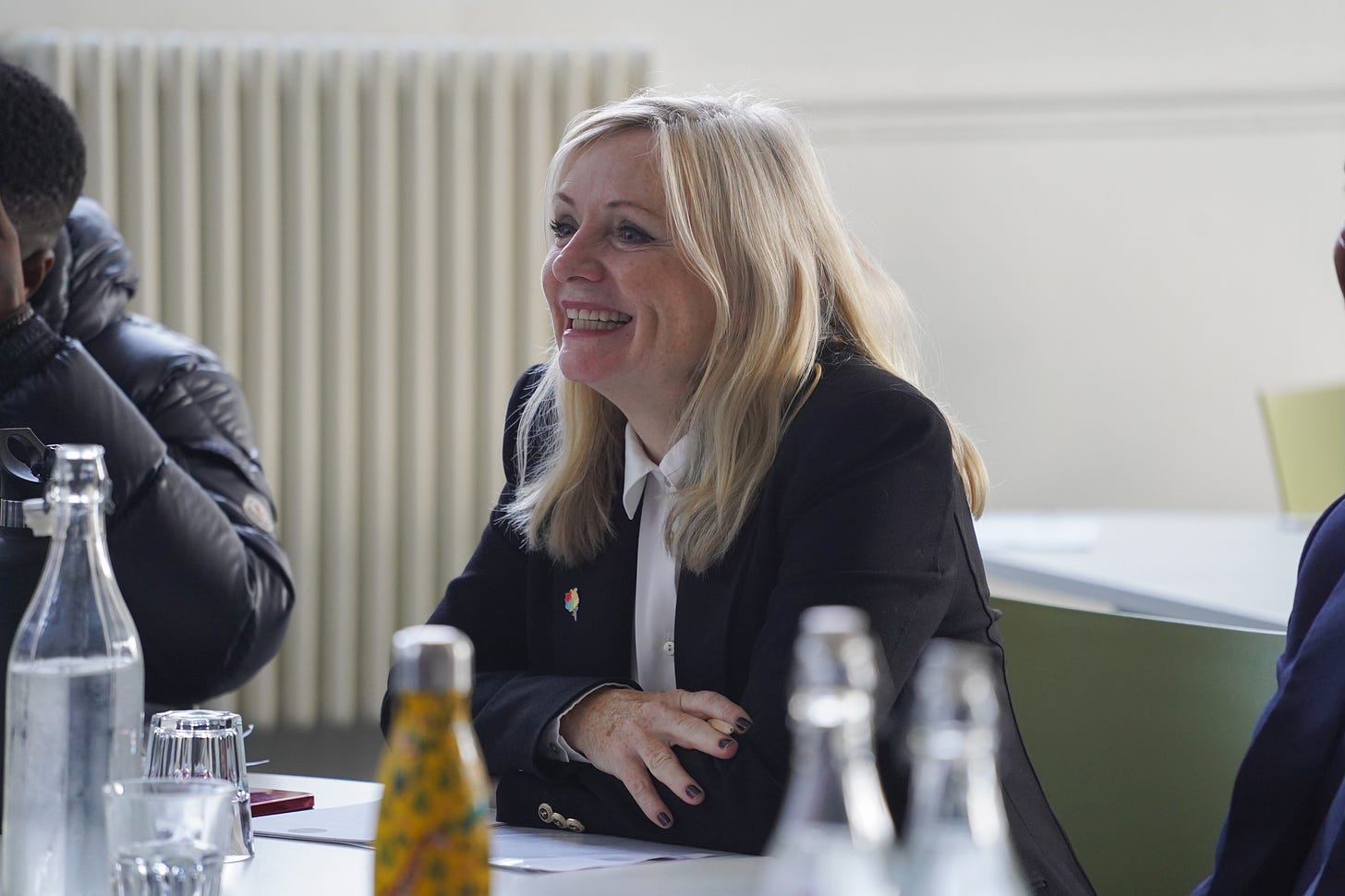Calderdale Wind Farm faces the winds of opposition as campaign launches for Parliamentary debate
Plus: Is a tourist tax for Calderdale a good idea?
Hello and welcome to the midweek edition of The Calderdale Lead!
I hope you’re having a good week and you’re looking forward to January - aka the never-ending month - coming to a close on Friday!
In today’s issue we’ve got a plea from campaigners to sign a petition that will force a parliamentary debate on plans for a huge windfarm in the borough.
Plus, suggestions from a think tank on how the region can earn more money from tourists.
So, on with the news!
Help protect Ted Hughes country! Campaigners call for action on planned peatland windfarm
Additional reporting by the LDRS’ John Greenwood
Campaigners against a huge windfarm on the moors above Calderdale are calling for signatures on a petition to force a Parliamentary debate.
Stronger Together to Stop Calderdale Wind Farm says 100,000 signatures will secure an MPs’ debate before the end of the year, when the Government is to publish its reformed National Planning Policy Framework.
Last year, Calder Wind Farm Ltd revealed plans for a 65-turbine wind farm on more than 2,300 hectares of land at Walshaw Moor, above Hebden Bridge.
The company say the windfarm could be England’s biggest if it progresses – and has submitted a scoping report to Calderdale Council to help identify significant likely effects, which would need to be fully assessed as part of a future planning application.
The proposals have already seen concerns raised by groups ranging from Campaign for the Protection of Rural England to the estate of the late Poet Laureate Ted Hughes, who was born in Mytholmroyd.
Those concerns include potential destruction of “an internationally recognised wildlife-rich peat moorland beloved of walkers, artists and visitors”, with impacts on birds, the landscape, and possible damage to peat bogs, which hold and retain water in an area which experiences flooding.
The company counter-argues that the windfarm will bring benefits, not least in terms of renewable energy, saying it could generate enough renewable energy to power up to 286,491 homes per year.
More than 250 people from across the borough attended a forum last May to discuss the plans and here from a range of speakers.
They included Carl Lawrence, Emeritus Professor of Engineering at Leeds University who explained the construction challenge of creating the wind farm, and how this “would irreparably industrialise the peat moorland”, including the effect damaging and removing the peat bogs which currently store significant quantities of carbon and water would be likely to have.
Campaigners’ concerns include potential destruction of “an internationally recognised wildlife-rich peat moorland beloved of walkers, artists and visitors”, with impacts on birds, the landscape, and possible damage to peat bogs, which hold and retain water in an area which experiences flooding.
The company counter-argues that the windfarm will bring benefits, not least in terms of renewable energy, saying it could generate enough renewable energy to power up to 286,491 homes per year.
The campaign group says Government itself has suggested a ban on wind farms on peatland.
Its recent public consultation on proposed changes to the National Planning Policy Framework noted “some habitats, such as those containing peat soils, might be considered unsuitable for renewable energy development due to their role in carbon sequestration” and asked if there should be additional protections for such habitats, they say.
However, campaigner Lydia Macpherson said: “It’s not a foregone conclusion that the government will carry out this important, climate- and nature-friendly planning reform.
“There are pressures to accelerate the development of big onshore wind farms, without any informed consideration of the resulting climate and nature/biodiversity damage from building infrastructure on peat.”
The West Yorkshire campaign group hope the government will listen to consultation responses about protecting peatland from wind farm development.
These include Wild Justice, the Town and Country Planning Association, the Royal Town Planning Institute, the Landscape Institute and CPRE the Countryside Charity, they say.
Calderdale wind farm developers have described the proposal as a “test case” for new onshore wind planning regulations, and if the application were to be approved, all protected peatland across England will be at risk, campaigners argue.
While recognising more onshore wind farms are needed there are plenty of suitable non- peatland sites for them and the balance must be right, they say.
The Calderdale Lead has reached out to Calder Wind Farm Ltd for comment.
Think tank calls for ‘tourist tax’ to help boost regional coffers
The boss of a leading think tank has called for Mayors to be given the power to bring in a visitor levy for their area.
Giving evidence to the Housing, Communities and Local Government Committee, IPPR North director Zoë Billingham explained that a visitor levy – a small charge applied to visitors accommodation, something commonplace in many other European countries - could increase Mayors’ powers to invest in, and lift up, their area.
Ms Billingham pointed to the success of destinations like Barcelona where the city brings in more than €100 million each year to be spent on improving infrastructure, public services and more.
She said: “In a country where an incredible 96p in every £1 is still raised by Whitehall – an internationally staggering figure - the government needs to apply its mantra of ‘devolution by default’ to new areas. From next year, councils in Scotland will have the ability to introduce visitor levies and Mayors in England should have the same power.
“Moving power from Whitehall to Town Halls is a route to powering up regions to deliver better living standards, a stronger democracy and growth across the country. The government have shown that they’re taking devolution seriously, with their promise of devolution by default. As devolution matures, this should involve fiscal devolution – and a visitor levy is a clear candidate for a quick win in phase one”.
If the Government took onboard the suggestion it could mean Mayor of West Yorkshire Tracy Brabin could impose the levy on accommodation providers across the region.
As reported in the Calderdale Lead last year, visits to the borough came in at a massive 7.6 million in 2023, up nearly 5% from 2022.
They were worth more than £600 million to the local economy, a 16% increase on the previous year, and supported over 5,500 full-time jobs – almost 10% more than in 2022.
In the UK, the Scottish Government introduced powers for Scottish local authorities to bring forward visitor levies and the Welsh government are looking to introduce one nationwide.
Within England, Business Improvement Districts have been used to introduce a form of visitor levy places including Liverpool and Manchester.
That’s it for this midweek edition of The Calderdale Lead.
We’ve got so much planned over the next few months so… you’re in a position to do so, please consider taking a paid subscription so I can keep popping into your inbox twice a week with a Calderdale digest and stories.
As always, if you have anything you think I should be reporting on or looking into then I’m on calderdale@thelead.uk
Enjoy the rest of the week and we’ll be back in your inbox on Sunday!
Andrew




